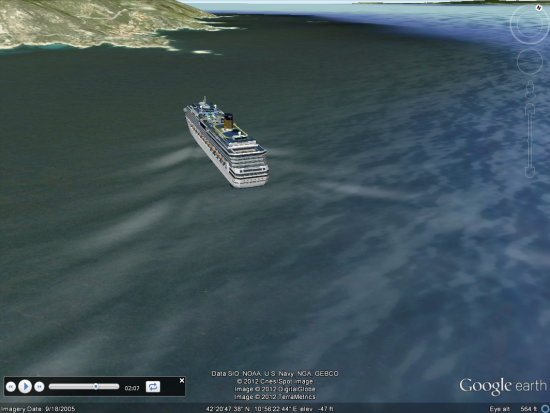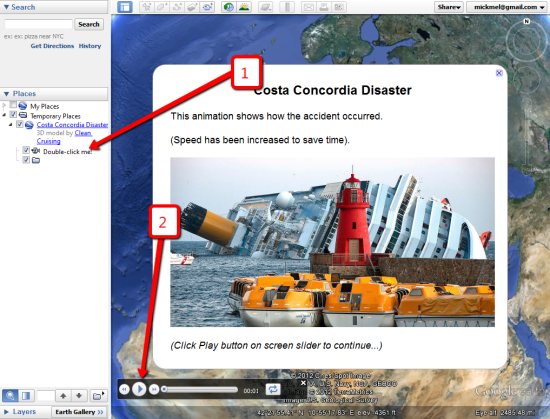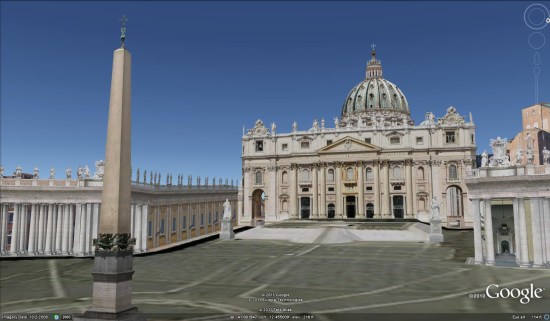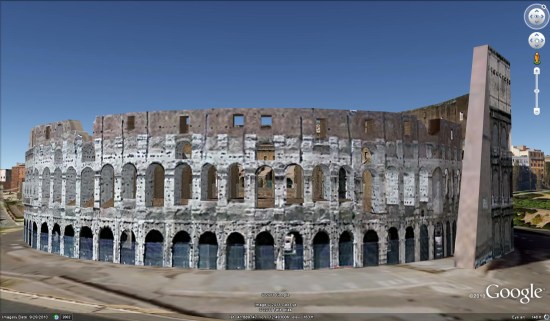Peter Olsen (who just days ago unveiled the excellent Terra Nova models) has built an incredible 3D tour of the wreck, with the entire journey animated!

The speed has been increased to save time, so you don’t have to wait 2-1/2 hours for it to finish, but it’s otherwise as accurate as possible. To see it for yourself, simply visit the Costa Concordia Disaster Animation page in the Google 3D Warehouse and choose the “View in Google Earth” link.
If you’re not familiar with using Tour files in Google Earth, simply click the “Double-click me!” text on the left to get it started, then click the play button at the bottom to step through the introductory slides, as seen here:

Fully animated tours like this are a great way to recreate events, and Peter is one of the best around at creating them.
via: GoogleEarthBlog

